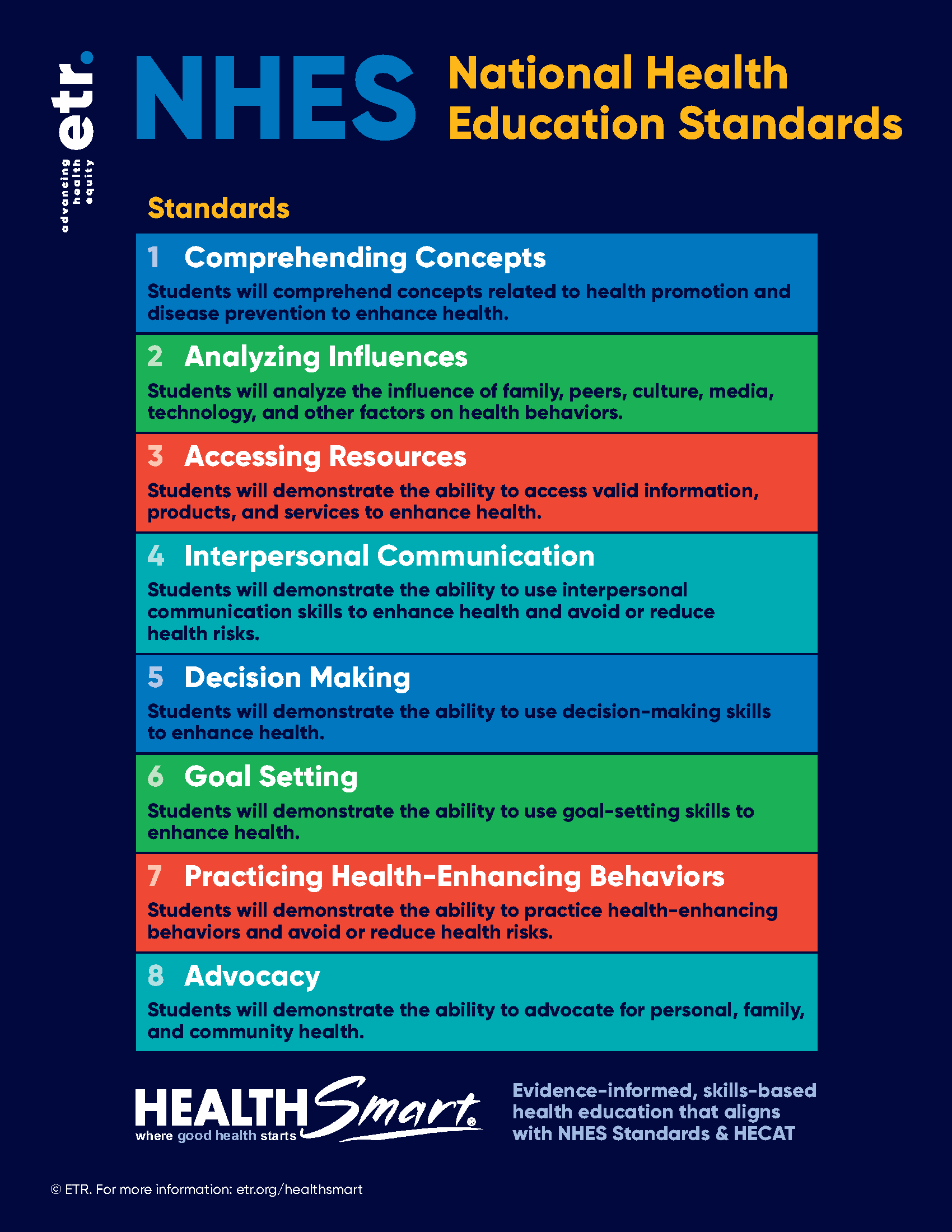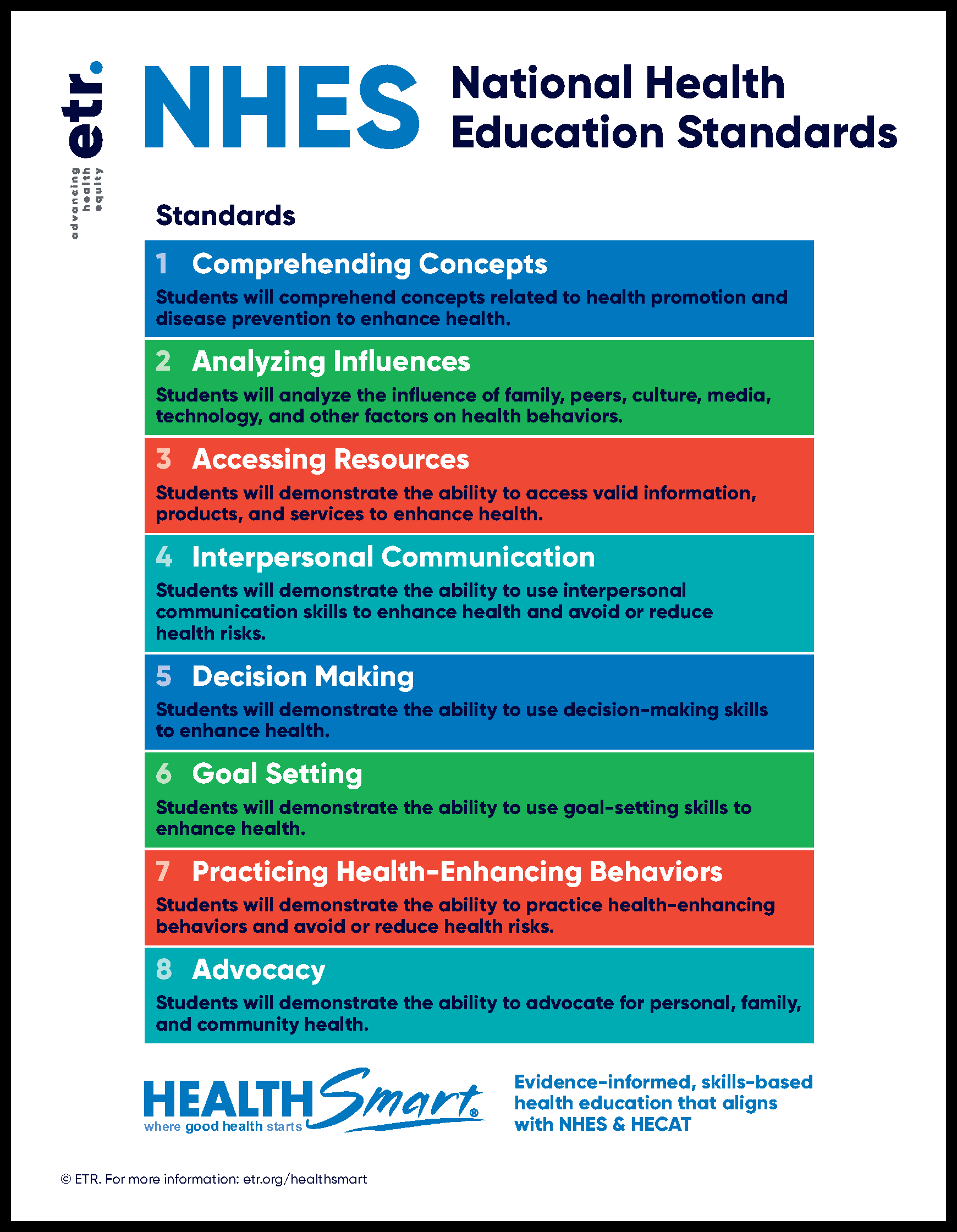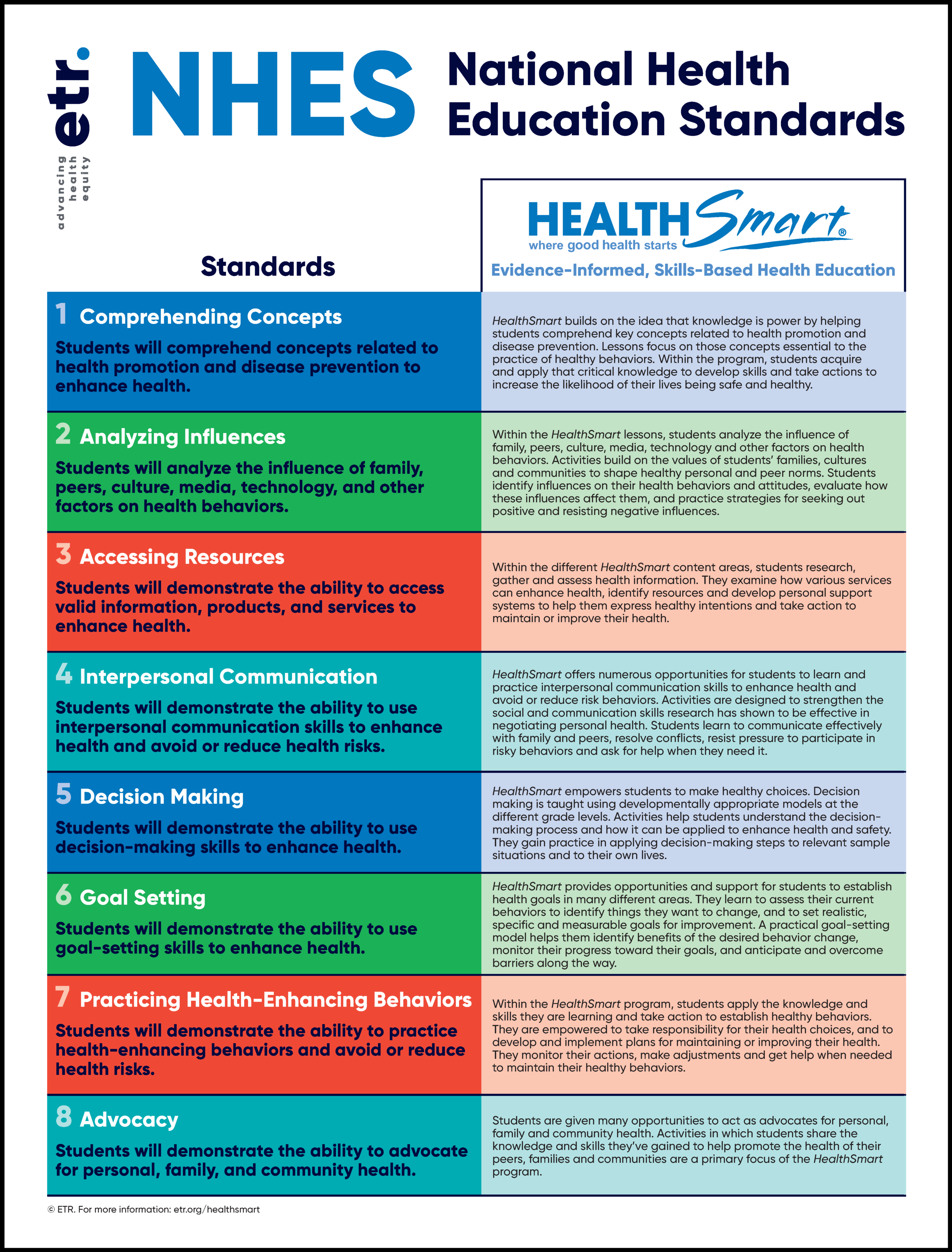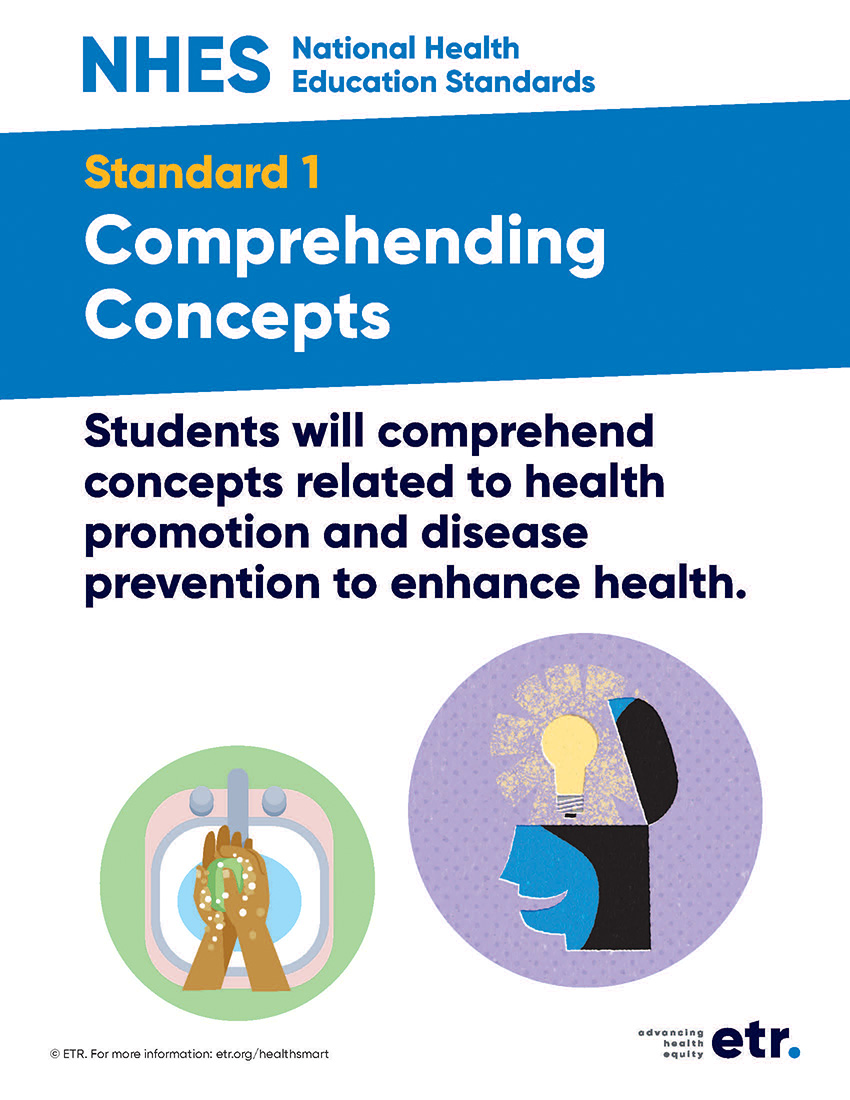HealthSmart and Standards
National Health Education Standards
The National Health Education Standards (NHES) detail what students need to know and be able to do in order to achieve health literacy. The NHES set performance indicators around the functional knowledge and essential skills required for adopting and maintaining healthy behaviors.
The HealthSmart program meets the NHES in many ways:
Standard 1: Concepts/Functional Health Information
HealthSmart builds on the idea that knowledge is power by helping students comprehend key concepts related to health promotion and disease prevention. Lessons focus on the concepts essential to the practice of healthy behaviors. Within the program, students acquire and apply that functional knowledge to develop skills and take actions to increase the likelihood of their lives being safe and healthy.
Standard 2: Analyzing Influences
Within the lessons, students analyze the influence of family, peers, culture, media, technology and other factors on health behaviors. Activities build on the values of students' families, cultures and communities to shape healthy personal and peer norms. Students identify influences on their health behaviors and attitudes, evaluate how these influences affect them, and practice strategies for seeking out positive and resisting negative influences.
Standard 3: Accessing Resources
Within the different content areas, students research, gather and assess health information. They examine how various services can enhance health, identify resources, and develop personal support systems to help them express healthy intentions and take action to maintain or improve their health.
Standard 4: Interpersonal Communication
HealthSmart offers numerous opportunities for students to learn and practice interpersonal communication skills to enhance health and avoid or reduce risk behaviors. Activities are designed to strengthen the social and communication skills research has shown to be effective in negotiating personal health. Students learn to communicate effectively with family and peers, resolve conflicts, resist pressure to participate in risky behaviors, and ask for help when they need it.
Standard 5: Decision Making
HealthSmart empowers students to make healthy choices. Decision making is taught using developmentally appropriate models at the different grade levels. Activities help students understand the decision-making process and how it can be applied to enhance health and safety. They gain practice in applying decision-making steps to relevant sample situations and to their own lives.
Standard 6: Goal Setting
HealthSmart provides opportunities and support for students to establish health goals in many different areas. They learn to assess their current behaviors to identify things they want to change, and to set realistic, specific and measurable goals for improvement. A practical goal-setting model helps them identify benefits of the desired behavior change, monitor their progress toward their goals, and anticipate and overcome barriers along the way.
Standard 7: Health Practices and Behaviors
Within the HealthSmart program, students apply the knowledge and skills they are learning and take action to establish healthy behaviors. They are empowered to take responsibility for their health choices, and to develop and implement plans for maintaining or improving their health. They monitor their actions, make adjustments and get help when needed to maintain their health and safety practices and behavior.
Standard 8: Advocacy
Students are given many opportunities to act as advocates for personal, family and community health. Activities in which students share the knowledge and skills they've gained to help promote the health of their peers, families and communities are a primary focus of the HealthSmart program.
See specific lesson alignments to the NHES here.
State Standards
HealthSmart has been aligned to many state standards. The program has particularly good alignment to state standards that incorporate the skills found in the National Health Education Standards.
CDC Standards






